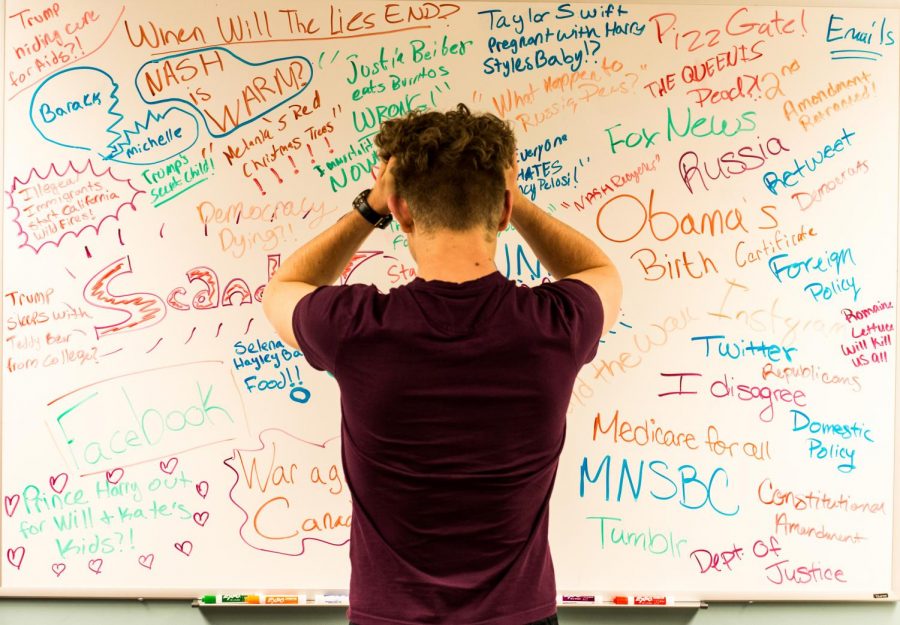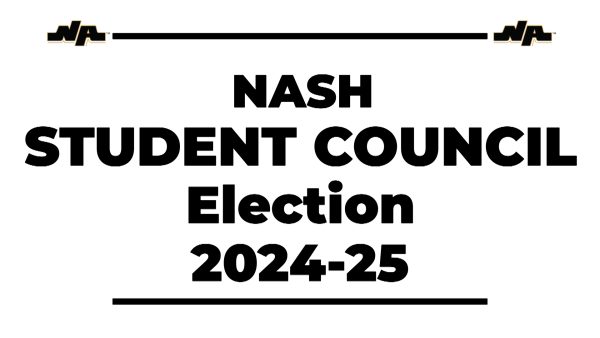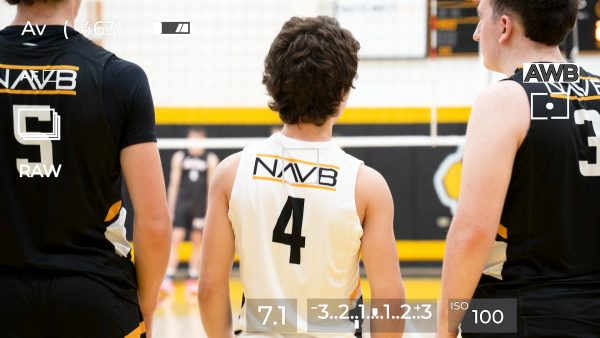Shots Fired / 2nd Ed.
The Fake News Problem
photo design by Rin Swann, Samantha Solenday, and Maria Cima
News channels like Fox News and Buzzfeed could take the exact same story about Trump with the same facts and still create different narratives.
December 28, 2018
Fake News
Noun, /feɪk ˈnuːz/
Definition: False stories that appear to be news, spread on the internet or using other media, usually created to influence political views or as a joke.
“There is a concern fake news may be used to influence election results.”
Fake News. It’s a term we’ve heard addressed by every side of the political spectrum, from blue and red, to purple and yellow, from republicans, democrats, neighbors, and the aunt you only see on Christmas. A cultural phenomenon that seemingly exists because, in a time where information can come with a click of a search button, misinformation runs rampant. But what really is “Fake News”? How do you recognize it, define it, and stop it? The answer is far more complex than the dictionary definition would imply.
The first thing to realize is that calling most mainstream media “Fake” is wrong. It is as wrong as saying two plus two equals an avocado. The concept that “Fake News” is the mainstream media is fake news itself. It just is not true. Even the most polarizing news channels, the Democratic CNN and the Republican Fox News are not fake. They’re biased. And that is a major difference.
The blanket term of “Fake News” that we use today covers three basic categories: bias, misinformation, and outright and deliberate lying. And major news sources cannot lie due to something called slander: the deliberate spread of misinformation to lie and influence others and the textbook definition of “Fake News.”
News channels like Fox News and Buzzfeed could take the exact same story about Trump with the same facts and still create different narratives. News sources cannot simply “make up” stories, like some politicians would have you believe, but they can use words and information to influence an agenda. It is not exactly moral reporting, and it is a major problem in the news cycle. But they are not “Fake News.”
So where does this leave the “Fake News” Problem? Where does misinformation start if not the news cycle? A recent survey of North Allegheny students posed the question, “Where do you primarily get your news?” followed by four options. These were the results.
CNN: 13 percent
Fox: 15 percent
Social Media: 51 percent
Other: 21 percent
Over fifty percent of the information students receive comes from the internet, from sites such as Snapchat, Instagram, and Facebook. And that is where “Fake News” begins.
Social Media sites do not have the same laws regarding slander as mainstream media. The point of social media is that everyone has the opportunity to share something, but that means articles and Tweets written and shared online. An article posted by your great Aunt about African Bubble Virus could be shared by her knitting group, then to all of their grandkids, then the grandkids could share to all of their friends and, suddenly, African Bubble Virus is trending on Snapchat when it never existed.
Social Media has no policy to be “true”. Most sites online follow basic rules against slander and outright lying, but there is no real way to police the entire internet. And if no one realizes, a story can start to climb the media ladder until it hits the mainstream. And that is where “Fake News” happens.
Take for example a recent story about Justin Bieber eating a burrito from the side. The picture was posted to a Subreddit and, within a week, the picture was number one on Reddit. It was all over Snapchat, making appearances on the major stories of the week. Even mainstream news picked up the story and start running it as a “laugh of the week.”
The problem? The picture was not Justin Bieber, but an impersonator hired by the Youtube channel “Yes Theory” to show how easy it is to trick the Internet and, as a result, the news cycle.
The problem that needs to be addressed is the recognition of what the truth is and what is a lie because, when the truth ceases to matter, there are no consequences for anything.
This is not uncommon. There are hundreds of thousands of deliberately untrue stories all over the internet. The internet is the true cause of fake news, but very few realize it.
To put this theory to the test, we conducted a random interview of 10 NA students. The first question they were asked was the generic, “How much of the news that you see do you believe is fake?”
The answers were surprisingly standard across the board. Most said between 30 and 60 percent, with two people saying 0 and 90 percent, respectively.
Then the second question: “Can you give me a specific example of Fake News within the last six months?”
That question was where the wheels fell off. Nine out of the ten students asked could not give a specific example. Most pointed fingers at Fox News or CNN, blaming the side of the political spectrum they did not agree with, but when pressed for a specific example, they could not give one. And, of all ten, no one mentioned the internet as the biggest proprietor of fake news despite being the place where they received their information from.
Nine out of ten. While most people believed 30 to 60 percent of the news cycle is fake, nine out of ten could not give an example to prove it. Those numbers are staggering.
When did the truth stop mattering to the majority of the population? When did it become bipartisan politics to shout “Fake News” at the side you do not agree with? Because both sides are guilty of spreading more misinformation and confusion and not addressing the root cause of the issue: that in mainstream culture, the truth is being weaponized. And it is treated as a joke and an excuse to refute hard, factual evidence.
Fake News is an inevitable part of living in the modern age, a side effect of having a world of information contained within a screen. The problem that needs to be addressed is the recognition of what the truth is and what is a lie because, when the truth ceases to matter, there are no consequences for anything.















Samantha Solenday • Dec 6, 2018 at 12:15 pm
@anonymous , you’re right, and I can admit that I made a mistake. However, we are not going to change the picture because the image is a focus on fake news…. while it was a mistake, it is not out of place in the photo. I apologize if it caused you any inconvenience.
anonymous • Dec 6, 2018 at 12:50 am
It should be msnbc in the picture…not mnsbc. Kind of embarrassing for a newspaper to mess up the title of another news company. Especially when they are writing about fake news…..